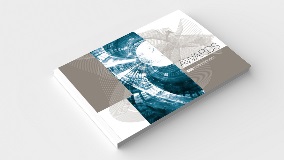Real-time 3D imaging software for electron microscopy developed
Feb 1, 2023|Season 5, Episode 2
In this podcast episode, MRS Bulletin’s Laura Leay interviews Robert Hovden from the University of Michigan and his graduate student Jonathan Schwartz on development of the freely available Tomviz platform (tomviz.org) that enables real-time three-dimensional (3D) visual analysis of materials. Building on the already existing Tomviz platform, Schwartz created new algorithms capable of pulling data from transmission and scanning electron microscopes, evolving the 3D image as the experiment progresses. This research is published in a recent issue of Nature Communications (https://doi.org/10.1038/s41467-022-32046-0).
LAURA LEAY: Welcome to MRS Bulletin’s Materials News Podcast, providing breakthrough news & interviews with researchers on the hot topics in materials research. My name is Laura Leay. Our ability to manipulate matter at the nanoscale has improved dramatically but sometimes the development of analytical techniques and the associated data analysis lags behind. It’s been possible to use electron microscopes to characterize materials in three dimensions for a while but the data processing can take days and usually requires significant personnel effort. One long-running collaboration between data scientists and specialists is set to change all that. Robert Hovden from the University of Michigan explains.
ROBERT HOVDEN: The reality of how science works is: there’s a lot of serendipity and there’s a lot of on-the-fly decisions that are being made during the time of the experiment. Jonathan set out to do tomography within a day and he ended up doing it within about 30 minutes.
LAURA LEAY: Jonathan Schwartz is a PhD candidate at the University of Michigan. He’s spent five years developing software that allow for three-dimensional nanostructures to be rendered as the data are being collected, building on a platform that has been around for even longer.
JONATHAN SCHWARTZ: We have this complete package that’s easily downloadable. We also had to integrate the capability to integrate live dynamic processes and be able to provide intermediate results as we’re completing our experiment so you can clearly see how – as you’re progressing through your experiment – how your structure is changing. I also had to develop a lot of new, novel algorithms that’s able to dynamically pull these data off the microscope.
LAURA LEAY: The open source software, called Tomviz, is designed to work with any microscope and on any computer operating system. The new algorithms feed into a visualizer to build up a 3D image that evolves in real time, becoming more detailed as the experiment progresses.
ROBERT HOVDEN: This isn’t just surface rendering like a Shrek movie. This is full volume where every voxel in this 3D cube has to be assigned transparency and color values. We had a platform that could do that, but it couldn’t do it dynamically. The software team at Kitware such as Chris Harris and Marcus Hanwell were really instrumental in getting that to work.
LAURA LEAY: This collaborative effort has finally come together in the last two years when the software was validated and tested and has already been used on helical nanoparticles to determine their chirality, something that can only be known using 3D tomography. Led by Jonathan, these innovations lead to data processing that is orders of magnitude faster than other solutions and means that adjustments can be made to instrument parameters to improve the final rendering of the 3D image in a single run. Tomviz can run on any modern computer, generating gigabytes of data that can render images with atomic resolution. It’s freely available for anyone to use.
JONATHAN SCHWARTZ: I’d just love to see people use the tool to see all the kinds of tomography reconstructions get produced out of it. Go download it at tomviz.org and give it a try.
LAURA LEAY: This work was published in a recent issue of Nature Communications. My name is Laura Leay from the Materials Research Society. For more news, log onto the MRS Bulletin website at mrsbulletin.org and follow us on twitter, @MRSBulletin. Don’t miss the next episode of MRS Bulletin Materials News – subscribe now. Thank you for listening.

